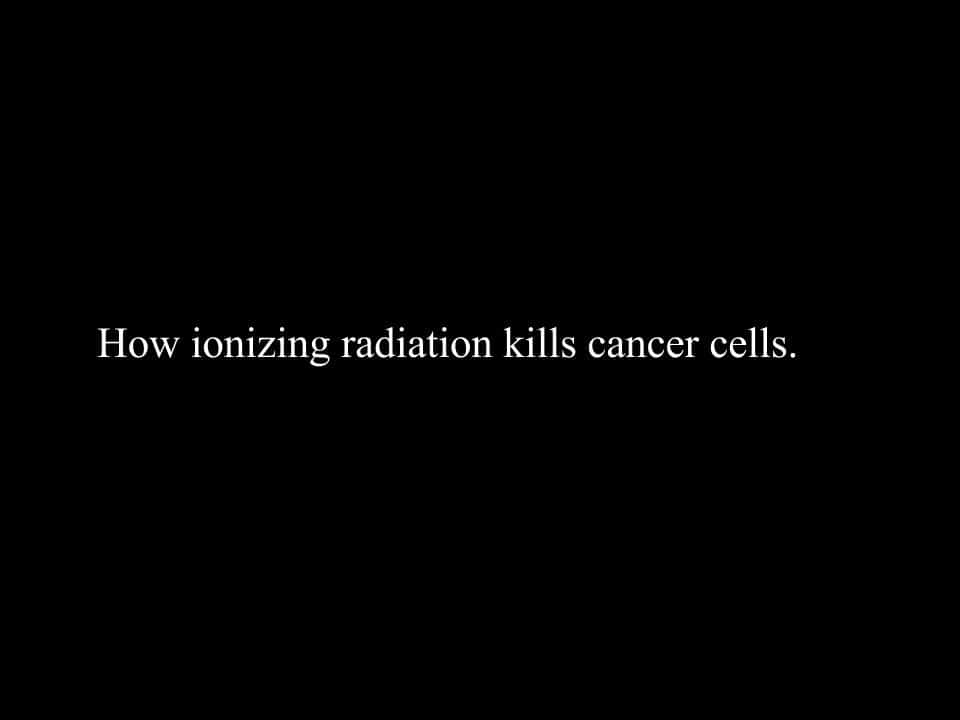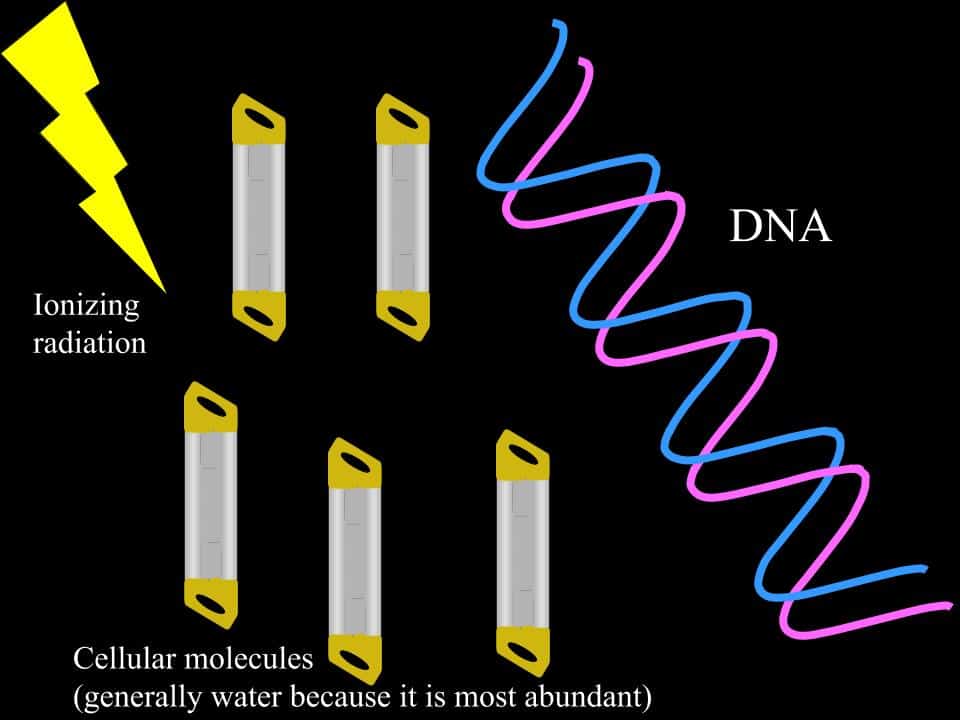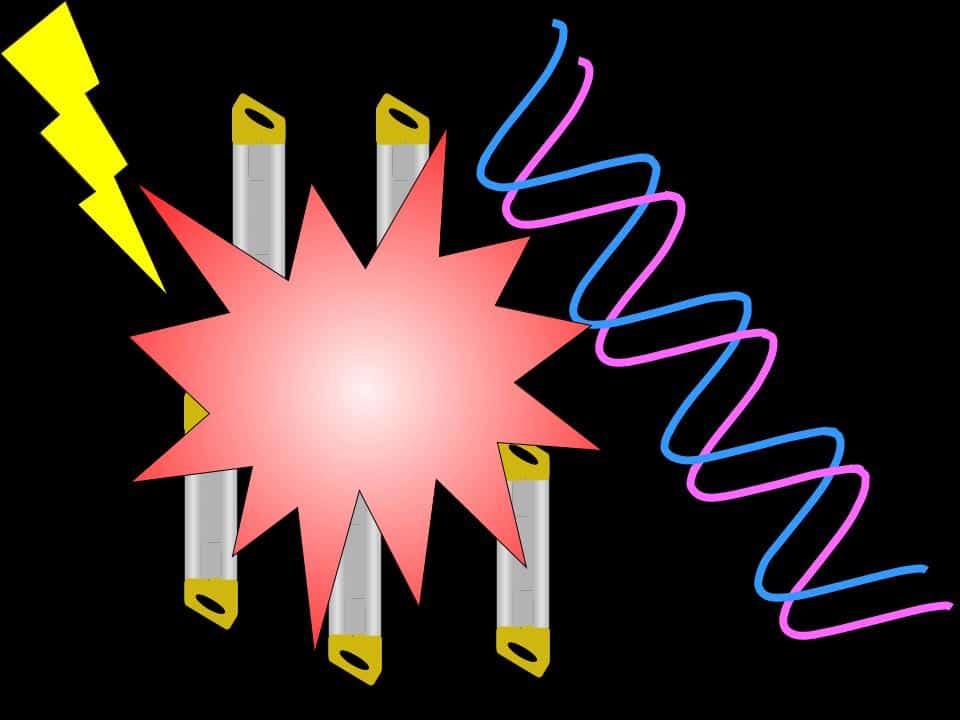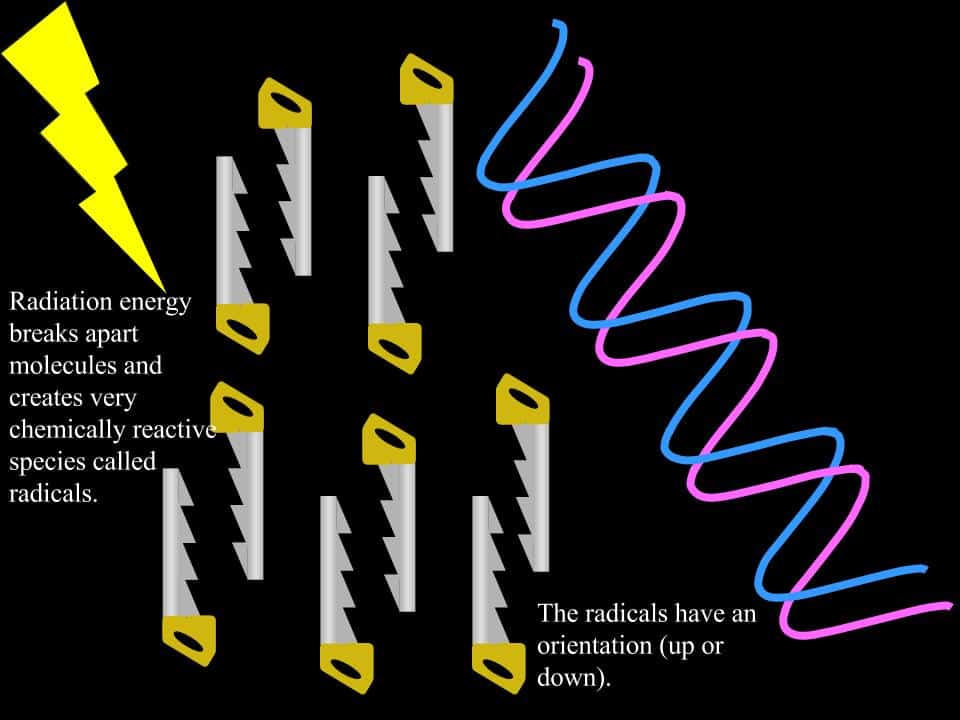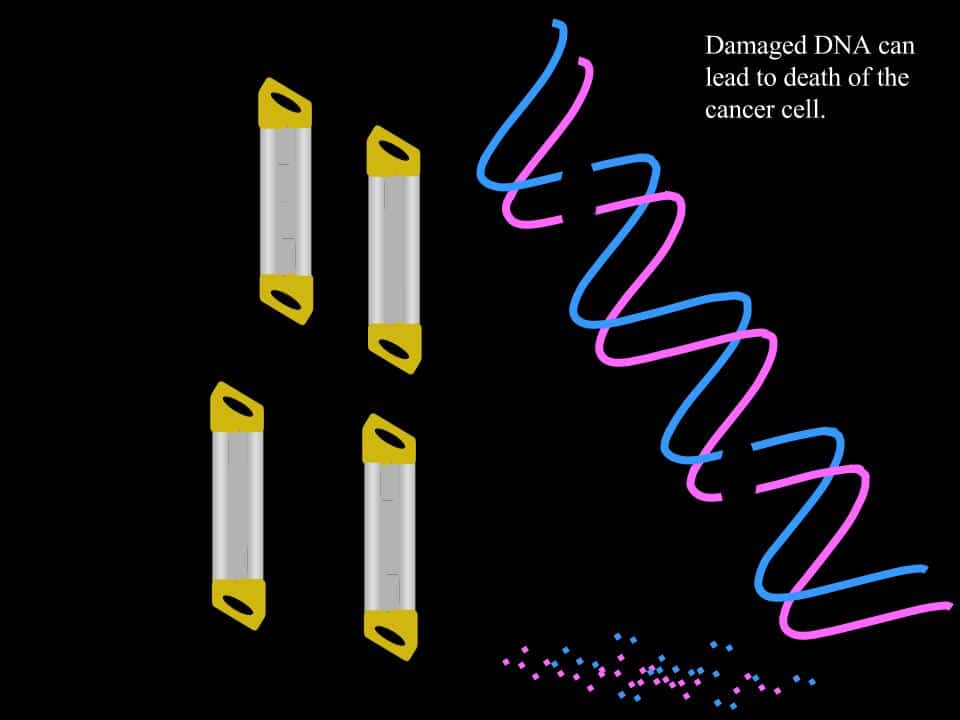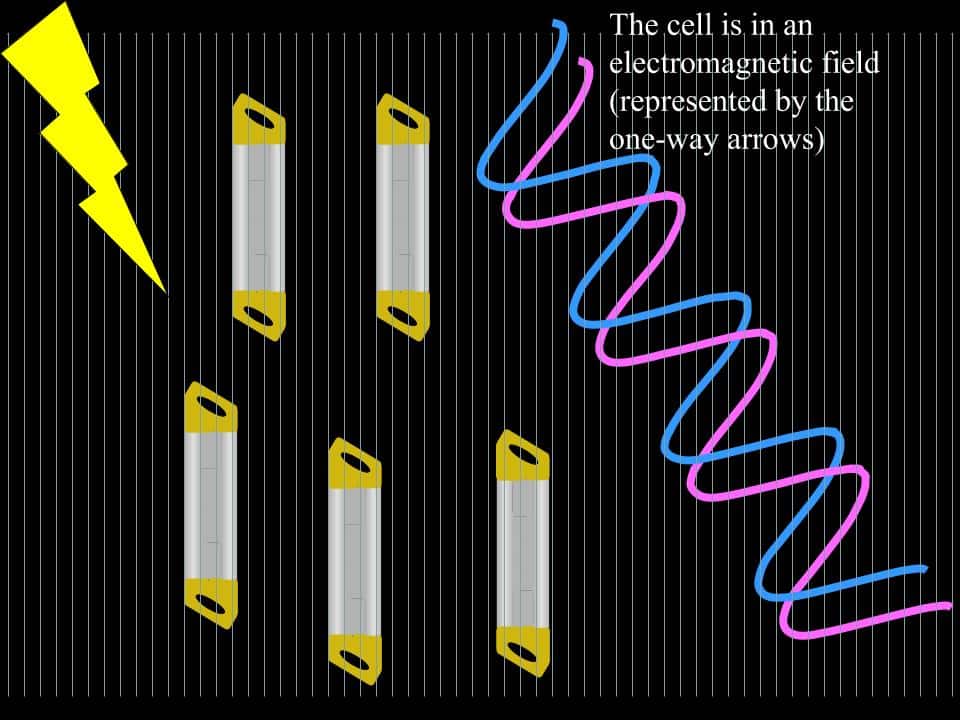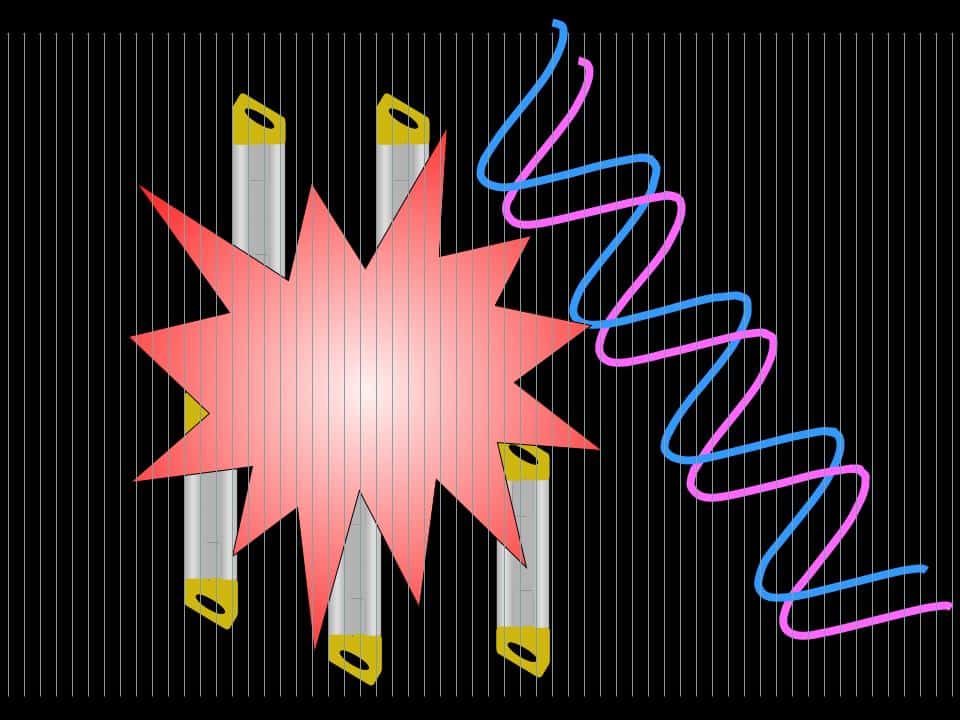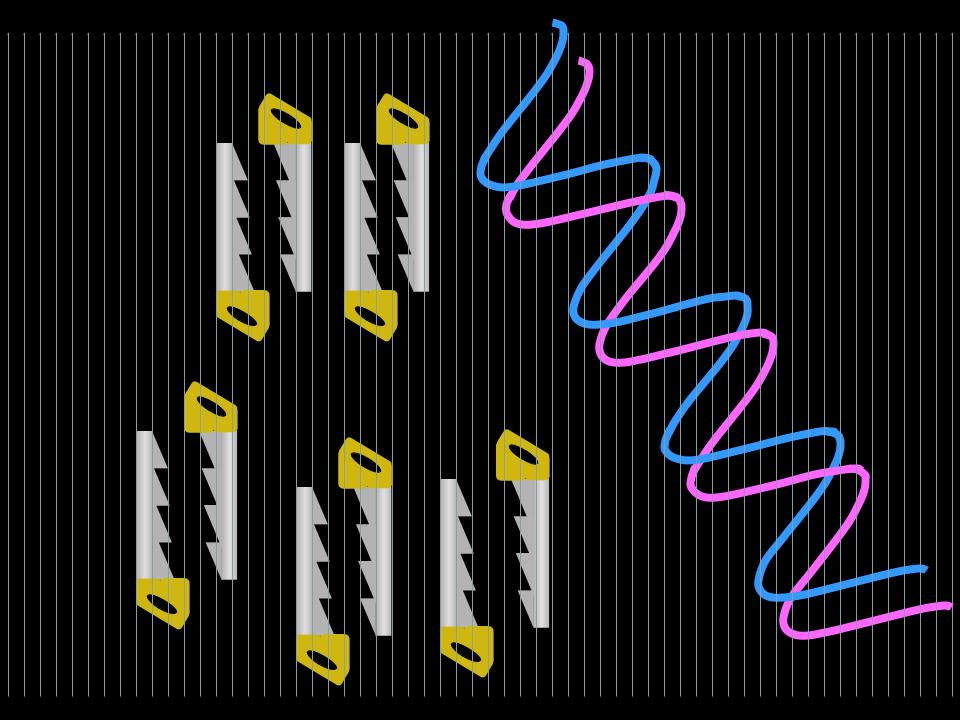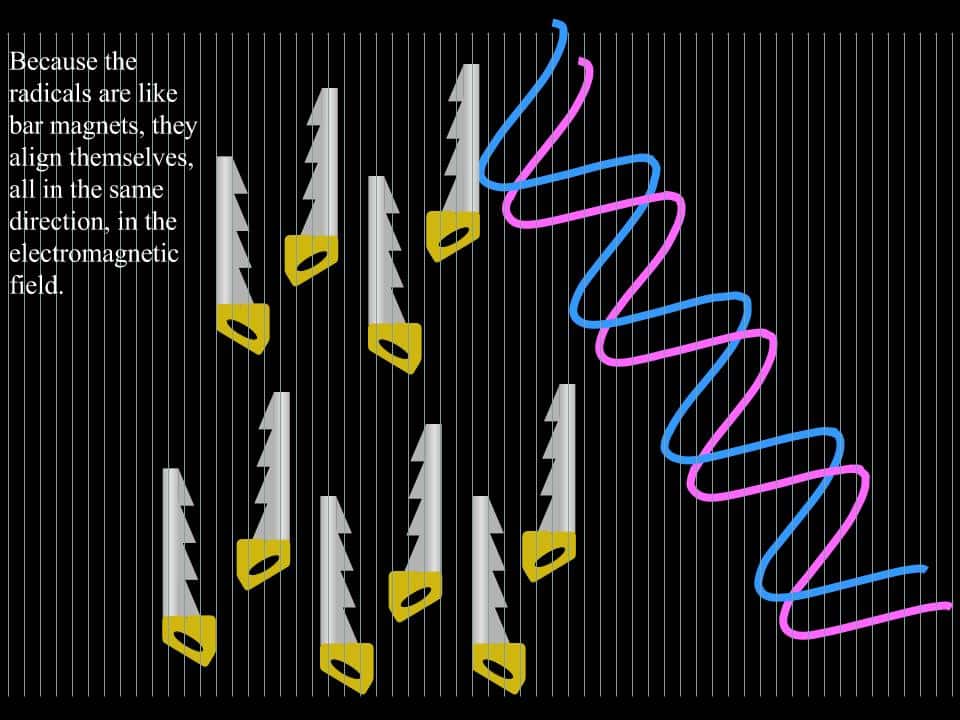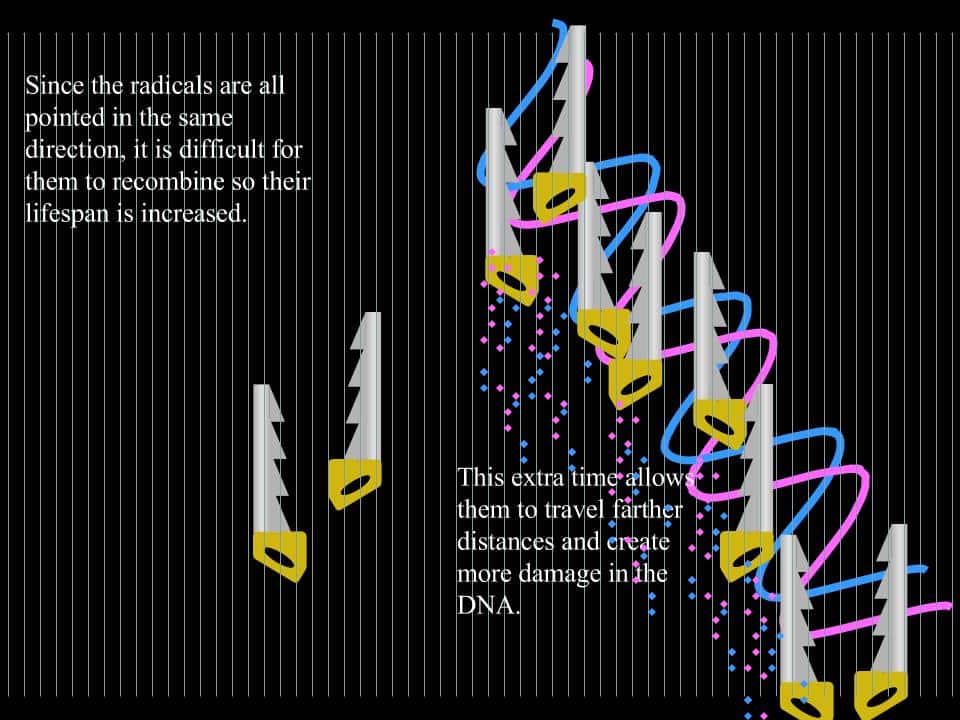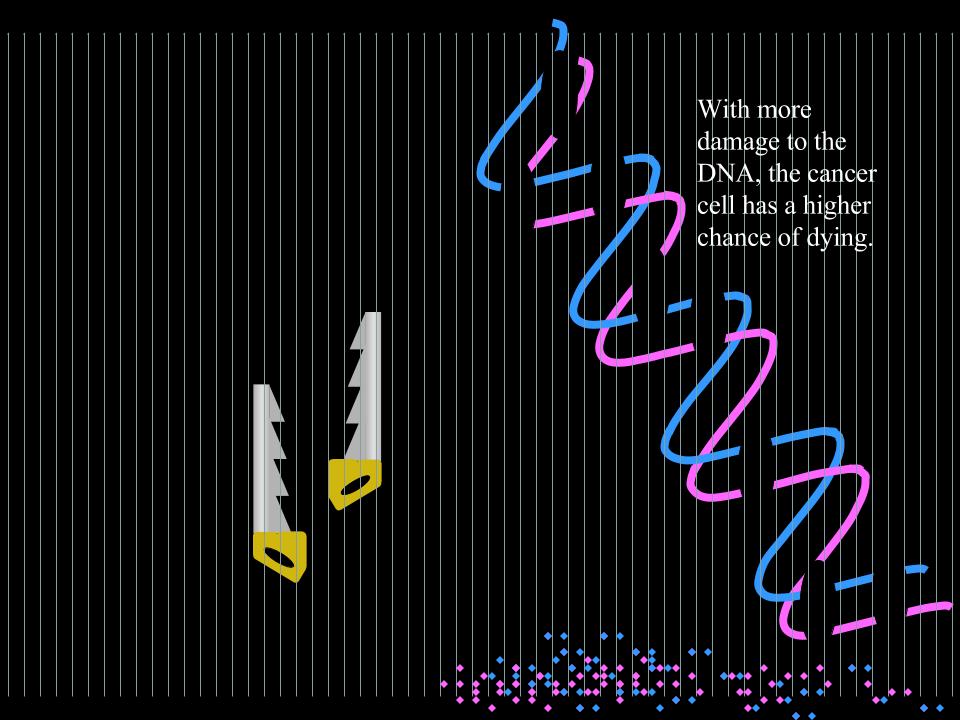Applied Quantum Chemistry for Oncology
Triplet State Technology’s Device May Improve Cancer Treatment Outcomes
Triplet State Technology in association with the UCLA Department of Radiation Oncology is pioneering an advance in quantum chemistry that holds promise to improve any cancer treatment whose primary action is via free radicals.
The clinical efficacy of radiation therapy is mechanistically linked to radiation-induced free radicals that cause cell injury through direct and indirect mechanisms. Free radical reaction dynamics in a cell come under many influences, but these can be manipulated by weak magnetic fields that influence singlet/triplet state interconversion. We demonstrate that the external presence of a magnetic field enhances radiation-induced cancer cell injury and death in vivo and in vitro.
Animal experiments employing the Sandstrom method. LLC cells were grafted into the leg of syngeneic C57BL/6 (a) or weakly allogeneic C3H (b) mice on Day -4. The legs were mock treated or irradiated with 6 Gy with or without exposure to EMF (simultaneously plus 30min post-irradiation). Tumor growth was monitored by caliper measurements
REFERENCES
1. Ottonello L, Frumento G, Arduino N, Dapino P, Tortolina G, Dallegri F. Immune complex stimulation of neutrophil apoptosis: investigating the involvement of oxidative and nonoxidative pathways. Free Radic Biol Med. 2001;30 (2):161-9. PubMed PMID: 11163533.
2. Henbest K, Kukura P, Rodgers C, Hore P, Timmel C. Radio frequency magnetic field effects on a radical recombination reaction: A diagnostic test for the radical pair mechanism. Journal American Chemical Society. 2004;126:8102-
3. Henbest KB, Kukura P, Rodgers CT, Hore PJ, Timmel CR. Radio frequency magnetic field effects on a radical recombination reaction: a diagnostic test for the radical pair mechanism. J Am Chem Soc. 2004;126(26):8102-3. doi: 10.1021/ja048220q. PubMed PMID: 15225036.
4. O’Dea AR, Curtis AF, Green NJ, Timmel CR, Hore PJ. Influence of dipolar interactions on radical pair recombination reactions subject to weak magnetic fields. J Phys Chem A. 2005;109(5):869-73. doi: 10.1021/jp0456943. PubMed PMID: 16838958.
5. Till U, Timmel CR, Brocklehurst B, Hore PJ. The influence of very small magnetic fields on radical recombination reactions in the limit of slow recombination. Chem Phys Lett. 1998;298(1-3):7-14. doi: Doi 10.1016/S0009-2614(98)01158-0. PubMed PMID: WOS:000077607700002.
6. Timmel CR, Henbest KB. A study of spin chemistry in weak magnetic fields. Philos Trans A Math Phys Eng Sci. 2004;362(1825):2573-89. doi: 10.1098/rsta.2004.1459. PubMed PMID: 15539359.
7. Timmel CR, Till U, Brocklehurst B, McLauchlan KA, Hore PJ. Effects of Weak Magnetic Fields on Free Radical Recombination Reactions. Mol Phys. 1998;95 (1):71-89. doi: Doi 10.1080/00268979809483134. PubMed PMID: WOS:00007577000 0007.
8. Cho Z, Yi J. A novel type of surface gradient coil. J Mag Res. 1991;94:471- 85.
9. Iwamoto K, Sandstrom RE, Bryan M, Liu Y, Elgart SR, Sheng K, Steinberg ML, McBride W, Low D. Weak Magnetic Fields Enhance the Efficacy of Radiation Therapy. Adv Radiat Oncol. 2021 Jan 16;6(3):100645. 9.
10. Lewis AM, Fay TP, Manolopoulos DE, Kerpal C, Richart S, Timmel CR. On the Low Magnetic Field Effect in Radical Pair Reactions. Journal of Chemical Physics Volume:149 Issue:3. 21 July 2018.
11. Naumann LM, Kaprealian TB, Cao M, Savjani RR, Iwamoto K, Sandstrom RE, Strause L, Steinberg ML, Low D. Dosimetric Evaluation of Physical Radiation Delivery Limits of a Weak Magnetic Field Generator on GBM Dose Distributions. Department of Radiation Oncology, University of California Los Angeles, Los Angeles, CA. Poster ASTRO Annual 2022 meeting, San Antonio, TX



